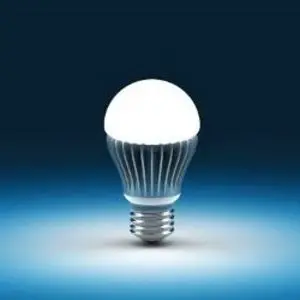If you’re wondering whether LED lights work on AC or DC, the answer is both! LED lights are versatile and can be used in a variety of settings. Keep reading to learn more about how LED lights work and the many benefits they offer.
What are LED lights?
LED lights are becoming increasingly popular as a more energy-efficient alternative to traditional incandescent bulbs. LED stands for “light emitting diode,” and these lights use less electricity than other types of lighting.
LEDs are very energy-efficient lights and have a long lifespan, making them an attractive alternative to traditional incandescent bulbs. One of the main advantages of LED lights is that they can operate on either AC or DC power. This means that LED lights can be used in a wide range of applications, including solar power systems.
How do LED lights work?
LEDs are semiconductor devices that emit light when an electric current is passed through them. They are made of two different types of semiconductor material, one that is an electrical conductor, and the other an insulator.
When voltage is applied to the LED, electrons flow from the negative electrode, through the LED, to the positive electrode. As they flow through the LED, they collide with holes in the p-n junction. This causes photons (light particles) to be emitted.
What are the benefits of LED lights?
The benefits of LED lights include a longer lifetime, lower power consumption, improved physical robustness, smaller size, and faster switching.
LED lights are available in a variety of colors, shapes, and sizes, and they can be used for both indoor and outdoor lighting. You can find LED lights that look like traditional light bulbs, as well as string lights, flood lights, and spotlights.
What are the drawbacks of LED lights?
Although LEDs have a lot of advantages, there are also some potential drawbacks to using this type of lighting. One of the main disadvantages is the initial cost. LEDs are more expensive than traditional light bulbs, although the price has been dropping steadily over the past few years.
Another potential drawback is that not all LED lights are dimmable. This means that if you want to use them with a dimmer switch, you’ll need to buy specialized bulbs that can be quite expensive.
LED lights also tend to produce a different light than traditional light bulbs. This can be an advantage or a disadvantage, depending on your personal preferences. Some people find that LED lights have a harsher, brighter light than they’re used to, while others prefer the cleaner light produced by LEDs.
How much do LED lights cost?
While the initial cost of LED bulbs is usually higher than that of incandescent or CFL bulbs, LEDs offer substantial savings over the long run. In addition to using less energy and lasting longer than other types of bulbs, LEDs also emit very little heat, which helps to reduce your energy costs even further.
Are LED lights energy efficient?
LED lights are so energy efficient that they can last up to 50,000 hours — that’s about 50 times longer than a traditional incandescent bulb! And since LED lights don’t produce heat like other types of lighting, they can help you save on your energy bills.
How long do LED lights last?
LED bulbs last a lot longer than traditional incandescent bulbs. In fact, they can last up to 50,000 hours! This means that you won’t have to replace your LED bulbs nearly as often as you would with other types of bulbs.
What are the applications of LED lights?
There are a variety of applications for LED lights, including:
- Indoor and outdoor lighting
- Automotive lighting
- Architectural lighting
- Display lighting
- Flashlights
- Task lighting
What are the safety concerns with LED lights?
Electrical safety is always a concern when using any type of light bulb, but LED lights have their own set of safety issues to consider.
One potential issue is that LED lights are typically powered by alternating current (AC), while most other types of light bulbs are powered by direct current (DC). This can create problems if you try to use an LED light in a fixture that is designed for a different type of bulb.
Another safety concern with LED lights is that they can produce a very bright light. This can be a problem if you are using them in an area where people will be looking directly at the light, such as in a workshop or garage. If you are using LED lights in an area like this, it is important to make sure that the area is well-ventilated so that people do not have to look directly at the light for long periods of time.
Finally, it is worth noting that LED lights tend to generate a lot of heat. This heat can be a problem if the lights are enclosed in a fixture or if they are being used in an area where there is not enough ventilation. In general, it is best to avoid using LED lights in enclosed spaces or in areas where there is not enough ventilation.
Are LED lights worth the investment?
Yes, LED lights are worth the investment. They are more energy-efficient and have a longer lifespan than other types of lightbulbs, so you’ll save money in the long run. In addition, LED lights are available in a wide range of colors to suit any preference or need.
NEXT UP: How Durable Are LED Work Lights?

